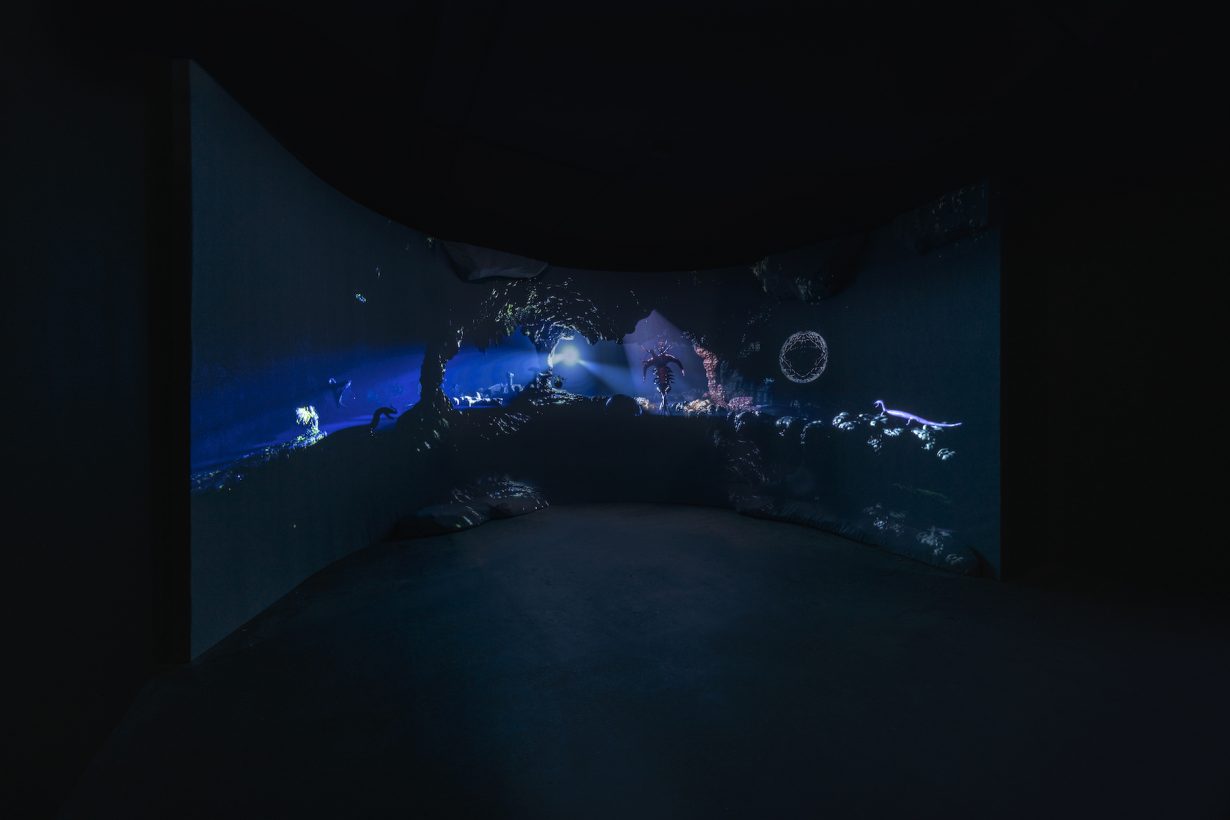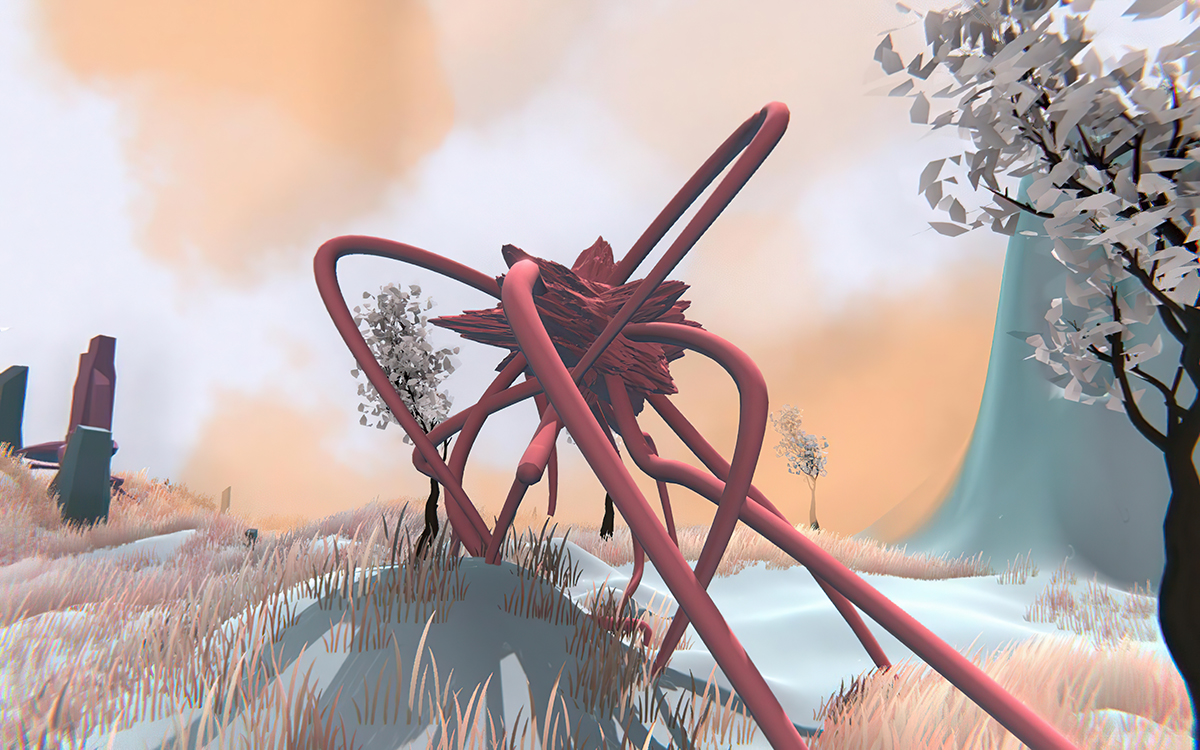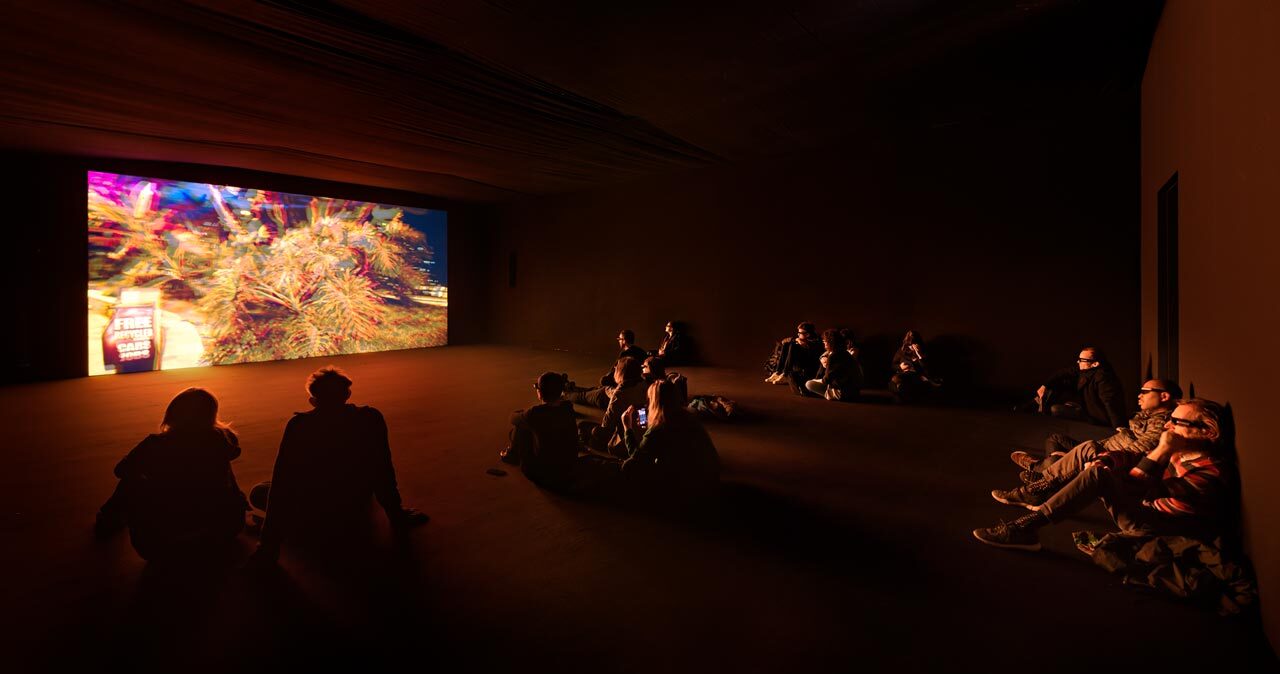Digital media art has more to offer as a force for animating beyond-human thinking
Before 2020, far fewer people would have turned to the internet to access an exhibition or an experience of a natural environment. Restricting us to our homes and shuttered neighbourhoods, lockdowns shattered any sense of digital platforms being the ‘wrong’ way to connect with the natural world or with art. As creative experiences and spaces proliferated online, they demonstrated digital media’s versatility in constructing immersive worlds and in representing experiences beyond human perception – both possibilities that have attracted ecologically engaged artists to the virtual realm for years.
Digital exhibitions and art projects have certainly attained an unprecedented level of acceptance since the onset of the COVID-19 pandemic. While many internet-based projects of the past two years have been funded and platformed by arts institutions – some willingly embracing the digital and some simply forced online – the web offers a particularly flexible and accessible arena for self-organised projects by early-career and emerging artists. Even as the large art fairs return to their prepandemic magnitude and recovering galleries encourage audiences back towards physical exhibitions, fully or partly online projects offer such ease of access that the partial decentralisation of the artworld – like many other realms – looks set for the long term.
A growing sphere of digital engagements, platformed by smaller, transdisciplinary arts festivals like Amsterdam’s FIBER Festival and Sonic Acts, centre ecological issues. FIBER’s programme in November 2021 was hybrid, featuring contributors from around the world. Maintaining a critical perspective on technology and art, the festival avoided evangelising representations of these disciplines as worldrighting forces. Part of a livestream of artists’ films, Astrid Feringa and Jean-Baptiste Castel’s This is not the Amazon (2019) began immersed in a rainforest, before slowly revealing the scene to be neatly contained within a computer-generated apartment simulation – as constructed and, effectively, domesticated as rendered images of real estate.

The ambivalence of such artworks forces us to remember our technologies of representation, even if this doesn’t resolve the problems of actually making and managing lifelike images of ‘nature’. When artists render elaborate virtual worlds to critique extinction, extractivism and toxicity, the medium can risk defeating the message. The carbon footprint of the internet rivals that of the global aviation industry, the heat produced by servers in animation studios is high enough to heat swimming pools and a wicked triad of mining, e-waste and chemical electronics recycling is leaching and leaking into ecosystems worldwide. Even leaving NFTs out of the equation, digital art is not a simple route to environmental harmony. Environmental engagements through technology open up many new possibilities. But digital world-making, like any other practice, demands self-reflexive use and consideration, not only of its material impacts, but also its effectiveness in engaging with the ecosystems and dynamic relationships with which artists aim to affectively connect us.
During the early 1990s, while scuba-diving over a deep-ocean trench, artist Char Davies experienced the sensation of hovering in pure space. Here, as she told Wired in 1996, she felt almost bodiless, with ‘no separations between inside and outside’. Davies’s description is practically the definition of ‘oceanic feeling’ – a term coined by the French writer Romain Rolland in a 1927 letter to Sigmund Freud. Rolland used it to express a sense of being at one with the world, undifferentiated from an endless or eternal lifeforce. From Davies’s memory of aquatic interconnectedness, she created one of the earliest VR artworks: Osmose (1995). Wearing a head-mounted display large enough to hint at a traditional diving helmet, along with a motion-tracking ‘interface’ vest, ‘immersants’ would navigate a porous terrain with their breath and movements, rising and falling amid luminous water, forests of vegetation and clouds of sparkling points like microfauna.
The illusion of being free of gravity lends the ocean – like outer space – to comparison with the virtual. All three of these realms hold promises of freedom and have been rich locations for speculative storytelling. But speculation can also be an act of financial prospecting, and each of these spheres is easily co-opted. In the sanitised corporate imaginaries of the virtual, perhaps we would float in bright, blank emptiness: an infinity pool of Facebook blue.
Facebook’s recent announcement of its future ‘Metaverse’ included a telling scene within a VR ‘forest room’ full of generic nature sounds and pleasingly green trees. Here users’ avatars stood, with koi carp sailing around their heads, experiencing precisely the same possessive view of underwater life that aquariums have offered for 150 years. This banal vision of an immersive world – and how environments can be coded as entertainment – came after Mark Zuckerberg’s demonstration of how Metaverse users could change the views from their virtual ‘homespace’ to any scene they wanted, conjuring simulated landscapes that would be as unchanging as screensavers.
‘Virtual’ ultimately derives from the Latin virtus, meaning potency, or in a literal sense, manhood. Many virtual worlds articulate a certain phallocentric worldview, centring the upright player, who acts, often violently, on a passive world constructed as a playground for their desires. Military training, high-budget Hollywood action sequences and first-person-shooter games have shared origins. But beyond the controlling and aggressive roles that these experiences centre, digital world-building has, since its inception, offered artists rich grounds for animating beyond-human thinking – carrying audiences into a sense of interconnection with a wild world and its disobedient others.
But while Davies’s Osmose aimed radically to dissolve perceived boundaries between the self and the universe using technology, her vision of transcendence reveals an early-internet idealism. Weaving in New Age-y cosmic trees, quotations from great turn-of-the-century thinkers and the cyber-stereotypical streams of binary code, Osmose had its naiveties. Now that we live intimately with the digital, we know that our relationship to seemingly disembodied machine intelligences that act upon our wetware, shaping and being shaped by our behaviours and impulse, is less than innocent.

The digital films of Joey Holder’s exhibition Abyssal Seeker (2021), shown at London’s Seventeen gallery last spring, offer a very different vision of a simulated ocean, combining science fact with mythic figuring to create a speculative realm in which humans must cohabit with the denizens of the deep. In the all-encompassing darkness of an undersea cave system, greenish eels and snakes wrapped into infinity loops twist and twitch in repetitive cycles, while soft-bodied beings and creatures covered in exoskeletal spines pulse in the all-encompassing darkness of undersea caves.
In its etymological passage via Old French, speculation formerly meant ‘rapt attention’, or an act of intense looking in the pursuit of truth. Beyond sketching the hypothetical, speculative creation can still offer a form of close attention to the present – extant dynamics often become clearer as they are examined, enhanced and altered by fiction. Abyssal Seeker reckons with dark ecology and the profound weirdness of the existences clustered in Earth’s biome: the irreducible otherness of living beings with whom we share our home, or even our bodies. In an ecological emergency, our interdependency with and impact on evolving living systems is becoming starker – and our ongoing pandemic has made it impossible to ignore the multitudes of microorganisms that fill and surround us. Now it is not just aspirations of cosmic oneness that lead us to imagine (and confront) radical and risky states of being with others; it is an urgent case of survival, where relations must be remade.
The films of Holder’s Abyssal Seeker are featured in New Mystics, an online project organised by Alice Bucknell that explores technology as magic and considers uncomfortable intimacies in how AI is being used – for example, to tailor personal astrological charts. Twelve contributions from artists including Lawrence Lek and Patricia Domínguez were released between the summer solstice and autumn equinox of 2021, each accessed by clicking a card on the New Mystics web page. Lined up in rows, these cards that turn with each mouseover resemble a combination of tarot deck, online poker game and Instagram grid. New Mystics felt potent when our pandemic-era isolation had only deepened our everyday relationships with algorithm- and AI-led technologies, often in mysterious interplay with our (self-)knowledge.

Drawing heavily on Donna Haraway’s attention to nurturing new states of becoming with nonhuman beings, New Mystics is also inspired by K Allado-McDowell, who started cowriting Pharmako-AI (2021) with the natural language processing model GPT-3 in the lockdown summer of 2020. New Mystics also collaborates with GPT-3, which uses deep learning to simulate human-written prose. Paired with a human artist and a human writer for each New Mystics instalment, the model acted as a ‘digital oracle’, delivering conversational reflections about magic, the internet and art. On Holder’s work, GPT-3 muses: ‘In Covid times, creating this [digital] space, you suddenly have the power – you can invite whoever you want to your world […] You feel that you’re in a ritual space with people.’
In our digital present, sites of connection are also sites of disconnect. If a heartening message throughout COVID-19 lockdowns has been ‘together in isolation’, life in late-capitalist digital media sometimes feels like isolation in constant togetherness. Despite their constant self-definition as ‘bringing people together’, growing evidence suggests that social media companies have chosen to embed divisive dynamics in their platform and to craft lonely, addictive personal worlds for their users. Algorithm-led feeds and targeted advertising replay our browsing histories to us as uncanny (self-) portraits infused with desire.
We are already used to living in intimate collaboration with machinic beings, processing information and being processed through the data we create. As GPT-3 sagely offers on the New Mystics page, ‘the internet is a collection of micro-grand universes’ – a cluster of realities tended collectively by human and nonhuman intelligences. Through the digital, we already dwell within a multiverse, unpredictable and negotiated with unseen actors.

In Sahej Rahal’s AI simulation, Bashinda (2020) – meaning ‘inhabitant’ in Hindi and Urdu – a camera view follows a dusky red being with many pool-noodle-like legs sprouting from all facets of a headless, rugged, rocklike body. With limbs rolling into action from every side, this creature strides, tumbles and pirouettes over the peachy grass of its digital biome as mountains rise and fall in the background. Bashinda is experienced by humans as a video, but it is really a game played live by a consortium of AIs independently operating different limbs within the strange digital organism at its heart. Through Bashinda, Rahal contests an Indian mythological figuring of society through the body of Manu, the first man according to the Manusmriti. In this hierarchy, partly echoed by Hobbes’s Leviathan (1651), different classes operate as different anatomical parts within a body politic: the ‘lowest’ groups are relegated towards the feet while others are elevated to the head. Instead, Rahal imagines the beings of Bashinda as distributed, mutable entities where mind and body merge. Their agency becomes complex and multiple in a radical restructuring of the social body, inflected by the science of embodied cognition.
While the dynamic of all-powerful conscious players acting upon nature as an objectified backdrop is inherent to realms like Facebook’s Metaverse, works like Bashinda and Abyssal Seeker instead present a ‘mutaverse’ where the human-centric perspective is troubled and expanded, forced to operate in dialogue with more-than-human agencies. Perhaps in the mutaverse we might finally attain the state where we are ‘not afraid of [our] joint kinship with animals and machines’, the relationality sketched decades ago by Haraway in her foundational ‘A Cyborg Manifesto’ (1985). In a mutaverse, ideas are unfaithful and uncontrolled, polluting each other across unstable boundaries and forming ever-shifting alliances. Mutation is a function of life, fuelling evolution as much as disease; recoding and metamorphosis are earthly states. In our arrhythmic moment of continued semisuspension, it has become impossible to maintain the fantasy of the world as a single, smooth-running machine. Our realities are multiple, partial and contradictory. Beyond the shiny monolith of a homogenising market Metaverse, many digital worlds already shift and glitch, overspill and interlock: an assemblage of mutaverses that echo, intoxicate and challenge each other.
Fiona Glen is a London-based writer and artist
